6 Best Travel Lens Picks for 2020
Packing for an exciting trip can be daunting at the best t of times, but it’s even more challenging if you plan on taking high-quality photos. You’ll want to keep the kit to a minimum if photography isn’t the trip’s focus, but what lens to choose? Do you take a single all-in-one zoom and have all bases covered, or split its focal range between two lenses with better optics?
Whatever your packing strategy, you can find the six best travel lenses in our in-depth review. There are too many original lenses for each camera manufacturer for this article to do them justice. so we’re focusing on third-party lenses available for multiple brands. If you have a Nikon camera, check out our Nikon travel lens recommendations for even more choices.
| Budget |
|---|
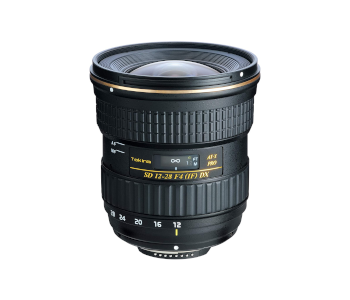 |
| Tokina 12-28mm f/4.0 AT-X Pro DX |
| 4.2/5.0 |
| Type: Wide-angle zoom |
| Image stabilization: No |
| No issues with chromatic aberration or flares. |
| Check Amazon |
| Best Value |
|---|
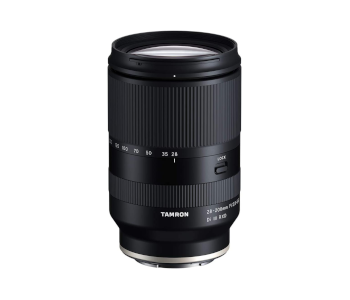 |
| Tamron 28-200 F/2.8-5.6 Di III RXD |
| 4.4/5.0 |
| Type: All-in-one zoom |
| Image stabilization: No |
| No problems with CA or distortion. |
| Check Amazon |
| Top Pick |
|---|
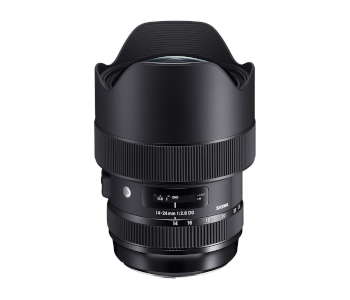 |
| Sigma 14-24mm f/2.8 DG HSM Art |
| 4.6/5.0 |
| Type: Wide-angle zoom |
| Image stabilization: No |
| Robust and weather-resistant build. |
| Check Amazon |
Travel Lenses Comparison Table
| Image | Product | Overall Rating | Image quality | Build quality | Features | Price |
|---|---|---|---|---|---|---|
 | Sigma 14-24mm f/2.8 DG HSM Art | 4.6 | 4.6 | 4.7 | 4.6 | Check Price |
 | Tamron 28-200 F/2.8-5.6 Di III RXD | 4.4 | 4.5 | 4.4 | 4.4 | Check Price |
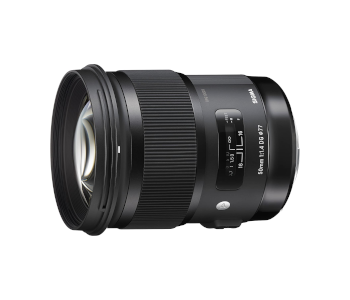 | Sigma 50mm f/1.4 DG HSM Art | 4.4 | 4.6 | 4.4 | 4.4 | Check Price |
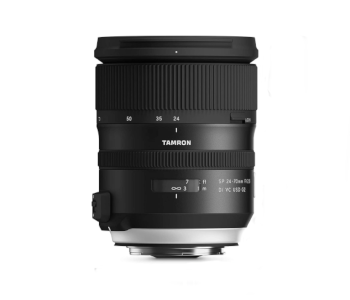 | Tamron SP 24-70mm f/2.8 Di VC USD G2 | 4.3 | 4.3 | 4.4 | 4.3 | Check Price |
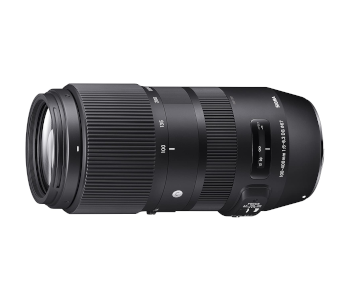 | Sigma 100-400mm f/5-6.3 DG OS HSM Contemporary | 4.3 | 4.4 | 4.3 | 4.3 | Check Price |
 | Tokina 12-28mm f/4.0 AT-X Pro DX | 4.2 | 4.2 | 4.3 | 4.2 | Check Price |
1. Best Overall – Sigma 14-24mm f/2.8 DG HSM Art
Editor’s Rating: 4.6/5
Wide-angle lenses are an essential part of a travel photographer’s kit, and the 14-24mm f/2.8 DG HSM Art from Sigma is the cream of the crop. It even bests many leading proprietary models when it comes to sharpness and both forms of CA. It’s a bright lens, meaning you’ll love using it for night sky photography or the inside of imposing structures like cathedrals.
Overview of Features
The 14-24mm f/2.8 DG HSM Art is a bulky lens with an affixed petal-shaped hood that reduces flare. It’s hefty for a wide-angle lens because of thorough weather sealing and a complex array of 17 elements arranged in 11 groups. These include Fluorite-grade and Super-Low Dispersion glass. The lens retains its length throughout its zoom range thanks to the hood, but its bulbous front glass moves within it.
Sigma uses HSM or HyperSonic Motor technology to quickly and silently drive the 14-24mm f/2.8 DG HSM Art’s autofocus. Keeping it in a standard range will lock on to a subject in an instant. Letting the lens cover its entire focusing distance will marginally slow it down, but this won’t have a large impact on landscape photos. You may use the focus ring to perform manual overrides in autofocus mode or precisely tune it with help from the adjacent distance scale.
The 14-24mm f/2.8 DG HSM Art is a remarkably sharp lens from the get-go. The frame’s edges and corners are already detailed at 14mm f/2.8, while overall sharpness jumps significantly at f/4. The lens’s sweet spot is between f/5.6 and f/11, with f/16 seeing a dip in performance that worsens at f/22. Zooming in marginally lowers the resolution but doesn’t alter its progression.
We were impressed with the way the 14-24mm f/2.8 DG HSM Art handles chromatic aberration. There’s barely a hint of the lateral kind at high apertures, and you’ll find no color fringing on shiny subjects like sunlight reflecting off of waves. A high max f-stop makes the lens an excellent choice for low-light and night time photos while also creating good-quality bokeh for this lens type.
What We Didn’t Like
The 14-24mm f/2.8 DG HSM Art has two flaws common for wide-angle lenses – pronounced vignetting and barrel distortion. Both are at their worst at 14mm f/2.8. The strong vignetting effect takes considerable stepping down or zooming to get rid of, or you can brighten the corners with editing software at the cost of noise. Barrel distortion is easy to correct either in-camera for JPEGs or during post for RAWs.
| Tech Specs |
|---|
| Dimensions: 3.8 x 3.8 x 5.3 in. |
| Weight: 2.5 lbs. |
| Type: Wide-angle zoom |
| Available for: Canon, Nikon, Sigma |
| Minimum focal length: 14mm |
| Maximum focal length: 24mm |
| Maximum aperture: f/2.8 |
| Minimum aperture: f/22 |
| Minimum focus distance: 10.2 in. |
| Viewing angles: 114.2° to 84.1° |
| Image stabilization: No |
| Pros |
|---|
| Fantastic image clarity |
| Robust and weather-resistant build |
| Quick and silent autofocus |
| Exceptionally low chromatic aberration |
| Cons |
|---|
| Pronounced vignetting at large apertures |
| Strong barrel distortion |
2. Best Value – Tamron 28-200 F/2.8-5.6 Di III RXD
Editor’s Rating: 4.4/5
Tamron has released the 28-200 F/2.8-5.6 Di III RXD in July of 2020, and it’s already shaping up to become one of the best all-in-one zoom lenses on the market. Its coverage replaces standard zoom and short telephoto lenses with minimal impact performance. Tamron’s lens is consistently sharp, built to last, and attractively priced.
Note: At the time of writing, the lens is available only in the Sony E-mount format. However, Tamron has confirmed that versions for Nikon and Canon mirrorless cameras are in the works.
Overview of Features
The 28-200 F/2.8-5.6 Di III RXD is small and light, given its long focal range. It’s an impressive engineering feat if you consider that the body is weather-sealed and houses 18 elements in 14 groups. An inner barrel extends when you zoom in and is held in place with a zoom lock to prevent it from creeping when facing downward. The lock is the only physical control.
The RXD in the lens’s name stands for Rapid eXtra-silent Drive, a stepping motor that handles its autofocus. The silent part is true; you can use the lens for filmmaking as it produces no noise while working. Its speed is on par with similar lenses from other manufacturers but begins to suffer in low light. There’s no AF/MF switch as you can step in and make manual corrections. The focus ring uses variable speeds to facilitate small-scale and sweeping adjustments to equal ease.
Uniform sharpness is the best thing about the 28-200 F/2.8-5.6 Di III RXD. There’s some discrepancy between the center and edges at max apertures, but corners aren’t soft until you step down completely. All-in-one zooms typically suffer from reduced resolution and contrast past 150mm, but Tamron’s lens falls behind only slightly. This is a commendable result when put into perspective.
We were equally satisfied with most of its other optical properties. The 28-200 F/2.8-5.6 Di III RXD is another lens that handles CA exceptionally well. It’s also capable of rendering beautiful background blur and pleasant bokeh highlights. There’s some barrel distortion at the short end that transitions to pincushion distortion past 50mm but never reaches concerning levels.
What’s Bad About It?
The 28-200 F/2.8-5.6 Di III RXD’s autofocus accuracy is inconsistent. It has the most trouble when focusing on close subjects and produces more duds than we’d like. The Sony E-mount version of the lens lacks image stabilization, leaning on Alpha cameras’ built-in stabilization instead. The result is an unimpressive two to three-stop reduction in shutter speed.
| Tech Specs |
|---|
| Dimensions: 2.9 x 2.9 x 4.6 in. |
| Weight: 1.3 lbs. |
| Type: All-in-one zoom |
| Available for: Sony |
| Minimum focal length: 28mm |
| Maximum focal length: 200mm |
| Maximum aperture: f/2.8 to 5.6 |
| Minimum aperture: f/22 to 32 |
| Minimum focus distance: 7.5 in. |
| Viewing angles: 75° 23′ to 12° 21′ |
| Image stabilization: No |
| Pros |
|---|
| Excellent value for the money |
| Fantastic sharpness and image consistency for its type |
| No problems with CA or distortion |
| Creates fine blurred-out backgrounds |
| Cons |
|---|
| Inconsistent autofocus |
| Would benefit from internal image stabilization |
3. Sigma 50mm f/1.4 DG HSM Art
Editor’s Rating: 4.4/5
A 50mm prime produces images that correspond to the human eye’s natural perspective, so you can take photos of anything with one and have them turn out good. If you use Sigma’s 50mm f/1.4 DG HSM Art, they’ll look stunning instead. It’s one of the world’s leading lenses when it comes to sharpness. You’ll love using it indoors and out thanks to a bright max aperture and superb flare resistance.
Overview of Features
The 50mm f/1.4 DG HSM Art is weighty for a standard prime. You’ll feel it after a while, especially if you’ve got a lighter camera that will feel front-heavy with this lens attached. That’s a small price to pay for the lens’s excellent build quality and complex glass array needed to achieve a max aperture of f/1.4. A petal-shaped hood is part of the package, and the 77mm thread takes ND filters or polarizers since it won’t rotate.
Autofocus is lightning fast thanks to Sigma’s Hyper-Sonic Motor technology. You can capture bustling streets or festival performances with equal ease since moving subjects don’t present a challenge. The focus ring is wide and ridged and can be gripped comfortably. It starts offering more resistance once you reach the minimum focusing distance or infinity.
The 50mm f/1.4 DG HSM Art features remarkable central sharpness across its aperture range. You’ll experience consistently clear performance from corner to corner and can use any f-stop to get satisfactory results, even f-16! Pairing the lens with cameras that boast a pixel count in the 40-50MP range introduces world-class results throughout the aperture range. The tradeoff? Softer corners at f/1.4 that are still tack-sharp when compared to lesser glass.
Unsurprisingly, the 50mm f/1.4 DG HSM Art shows less than half a percent of barrel distortion. You’ll have no trouble with flares or ghosting, unless you step down to f/16 and deliberately induce them. Transitions in blurry backgrounds are wonderfully smooth, and bokeh quality is top-notch. Chromatic aberration doesn’t reach more than three-quarters of a pixel in width even in high-contrast, blurred-out parts of an image.
Are There Drawbacks?
The 50mm f/1.4 DG HSM Art shows 2.5 stops of light falloff at f/1.4. It also lacks optical stabilization, which would have made it even heavier but improved handheld results.
| Tech Specs |
|---|
| Dimensions: 3.4 x 3.4 x 4 in. |
| Weight: 1.8 lbs. |
| Type: Standard prime |
| Available for: Canon, Nikon, Panasonic, Sigma, Sony |
| Focal length: 50mm |
| Maximum aperture: f/1.4 |
| Minimum aperture: f/16 |
| Minimum focus distance: 7.5 in. |
| Viewing angles: 46.8° |
| Image stabilization: No |
| Pros |
|---|
| World-class sharpness |
| Negligible distortion |
| Fast autofocus |
| Handles flares and chromatic aberration well |
| Cons |
|---|
| Pronounced vignetting when wide open |
| No image stabilization |
4. Tamron SP 24-70mm f/2.8 Di VC USD G2
Editor’s Rating: 4.3/5
While wide-angle lenses are perfect for snapping pictures of sites, a standard lens like Tamron’s SP 24-70mm f/2.8 Di VC USD G is a better option for capturing your personal experiences. It’s great for pictures of food, group shots, and even artful portraits when zoomed in completely. It’s a superbly-built lens with effective image stabilization and a price that puts competing Nikon and Canon lenses to shame.
Overview of Features
Build quality is the SP 24-70mm f/2.8 Di VC USD G’s best feature. It’s made from a mixture of metal and quality plastic that’s solidly put together and can withstand harsh weather. Both rings are rubberized and easy to grip. You’ll find a zoom lock as well as physical controls for focus switching and image stabilization on the left. Finally, the front glass element is coated with fluorine, which repels water droplets and makes smudges easier to clean.
The Ultra Sonic Drive motor that powers the lens’s autofocus does so with excellent accuracy and won’t interfere with film shoots. It’s slower than Canon’s equivalent, but it’s also less expensive. You can also buy the tap-in console, an optional accessory that can update the lens’s firmware and correct potential AF problems. Vibration Compensation or VC is effective up to an impressive five stops, allowing you to make longer exposures and get clean handheld images.
The SP 24-70mm f/2.8 Di VC USD G’s sharpness is generally on point, but there is a caveat. The corners are much softer than the rest of the image at f/2.8 regardless of focal length. However, you might not care if you use the setting for portraits and other photos where shallow depth of field can mask the poor performance. Luckily, stepping down to f/4 leads to drastic improvements in corner sharpness, and the picture becomes uniform by the time you’re at f/5.6.
Bokeh shows some onion rings and pronounced outlines, but non-highlighted background blur is smooth and dreamy. Flare resistance is good as having the sun in your shots has minimal impact on contrast and introduces a few small artifacts. The lens shows moderate amounts of barrel distortion at 24mm and transitions to modest pincushion distortion past 70mm.
Are There Drawbacks?
The SP 24-70mm f/2.8 Di VC USD G suffers from pronounced chromatic aberration in the corners at high focal lengths. Vignetting is also quite strong, reaching a difference of three stops when the lens is wide open. You won’t be able to use in-camera correction since this is a third-party lens, so Lightroom is your best option.
| Tech Specs |
|---|
| Dimensions: 3.5 x 3.5 x 4.3 in. |
| Weight: 2 lbs. |
| Type: Standard zoom |
| Available for: Canon, Nikon |
| Minimum focal length: 24mm |
| Maximum focal length: 70mm |
| Maximum aperture: f/2.8 |
| Minimum aperture: f/22 |
| Minimum focus distance: 1.3 ft. |
| Viewing angles: 84° 4′ to 34° 21′ |
| Image stabilization: Yes |
| Pros |
|---|
| Excellent build quality |
| Effective image stabilization |
| Uniform sharpness at f/5.6 and f/8 |
| Good flare resistance |
| Cons |
|---|
| Strong CA, soft corners, and pronounced vignetting at f/2.8 |
5. Sigma 100-400mm f/5-6.3 DG OS HSM Contemporary
Editor’s Rating: 4.3/5
Wide-angle lenses are great for shots of sprawling landscapes, but you’ll need a telephoto to captures far-away mountain peaks or elusive animals in all their glory. Sigma is the go-to option again as the 100-400mm f/5-6.3 DG OS HSM Contemporary offers a remarkable balance of cost, build quality, and optical properties.
Overview of Features
The first thing you’ll notice about the 100-400mm f/5-6.3 DG OS HSM Contemporary is how light and small it is for a telephoto with a max focal length of 400mm. Even though it has 21 elements in 15 groups, the TSC or Thermally Stable Composite its barrel is made from keeps the lens light. The barrel is brimming with controls; two switches control focus limits and type while two more handle image stabilization and toggling between two custom functions you can assign to the C button.
The lens hood is a unique addition as it lets you zoom in & out by gripping an indentation and moving the barrel back & forth. The zoom ring is good enough if you don’t wish to experiment as it has a 90-degree throw that allows for quick adjustments.
Autofocus performance is decent, provided there’s enough light. You can speed things up by using the appropriate focus limit, and image stabilization provides three stops of assistance that will help with longer exposures. You may turn OS off, us standard mode, or switch to one designed for smooth panning.
The 100-400mm f/5-6.3 DG OS HSM Contemporary’s sharpness is decent. We were especially pleased by its performance at 400mm, a focal length at which image quality is hard to maintain even for much pricier lenses. You’ll get the best results at 200mm. The lens follows a pattern of good central sharpness and soft corners at max aperture. The former improves slightly towards f/11 while the latter gets a decent resolution bump as soon as you step down a stop.
Telephoto zooms with low max apertures usually aren’t candidates for excellent bokeh quality, but this one is a welcome exception. Vignetting never exceeds 1.5 stops, and pincushion distortion is within acceptable limits.
What’s Bad About It?
While the 100-400mm f/5-6.3 DG OS HSM Contemporary is light, the addition of a tripod collar would have been nice. You can’t even buy one separately. Take care not to shoot into the light as the lens is susceptible to veiling flare.
| Tech Specs |
|---|
| Dimensions: 3.4 x 3.4 x 7.2 in. |
| Weight: 2.6 lbs. |
| Type: Telephoto zoom |
| Available for: Canon, Nikon, Sigma |
| Minimum focal length: 100mm |
| Maximum focal length: 400mm |
| Maximum aperture: f/5 to 6.3 |
| Minimum aperture: f/22 |
| Minimum focus distance: 5.3 ft. |
| Viewing angles: 24.4° to 6.2° |
| Image stabilization: Yes |
| Pros |
|---|
| Exceptionally light and small for this kind of telephoto |
| Customizable stabilization settings and C button |
| Controlled light falloff |
| Sharpness doesn’t degrade at 400mm |
| Cons |
|---|
| Doesn’t come with a lens hood |
| Issues with artifacts and veiling flare when there’s too much light in the frame |
6. Best Budget Option – Tokina 12-28mm f/4.0 AT-X Pro DX
Editor’s Rating: 4.2/5
Tokina is known for its extensive wide-angle lens lineup, and our budget pick is the one to get if you’re the owner of a Canon or Nikon APS-C camera. Its focal length equals 18-42mm in full-frame terms, meaning it’s useful for landscapes and sites you’ll come across on your travels. It’s a well-rounded lens with an interesting focusing system, solid optics, and an attractive price.
Overview of Features
The 12-28mm f/4.0 AT-X Pro DX is heavy for an APS-C wide-angle zoom lens. Unsurprising as its solid plastic barrel and 14 glass elements in 12 groups. Tokina doesn’t claim the lens is weather-sealed, but the metal mount and rubber gasket on its lip effectively keep dust and sand from reaching the internals. Zooming causes the lens to extend externally, but the convex front element never reaches past the filter thread.
The Silent-Drive Module responsible for autofocus doesn’t live up to its name as the 12-28mm f/4.0 AT-X Pro DX produces audible whirring when adjusting itself. This only affects video shooters, while travel photographers can look forward to fast acquisition and few snaps for the discard pile. The lens doesn’t have manual focus override. You have to pull the focus ring towards or away from the camera to toggle from manual to automatic.
The 12-28mm f/4.0 AT-X Pro DX has a sharp center when wide open and maintains it throughout the focal range. Corners are at their worst at 12mm f/4, where they lag behind the center considerably. You’ll have to either zoom in or narrow the aperture for a marked improvement. Doing the latter is a good idea regardless of focal length since overall sharpness keeps improving until it reaches uniformity at f/8. Going one step further yields usable images, but diffraction becomes a problem past f/16.
This is another lens with better bokeh and background blur than expected. Chromatic aberration is on par with Sigma’s nifty-fifty, and you can either disregard light falloff or apply slight correction when needed. Flares & artifacts aren’t problematic, and neither is loss of contrast with bright light sources in the frame.
What We Didn’t Like
The 12-28mm f/4.0 AT-X Pro DX shows moderate levels of barrel distortion at 12mm. Zoom in or avoid straight lines to correct this.
| Tech Specs |
|---|
| Dimensions: 3.3 x 3.3 x 3.6 in. |
| Weight: 1.2 lbs. |
| Type: Wide-angle zoom |
| Available for: Canon, Nikon |
| Minimum focal length: 12mm |
| Maximum focal length: 28mm |
| Maximum aperture: f/4 |
| Minimum aperture: f/22 |
| Minimum focus distance: 9.8 in. |
| Viewing angles: 99° 37′ to 54° 73′ |
| Image stabilization: No |
| Pros |
|---|
| Great build quality at a low price |
| No issues with chromatic aberration or flares |
| Renders attractive bokeh and background blur |
| Maintains good overall sharpness from f/5.6 to f/11 |
| Cons |
|---|
| Soft corners at 12mm f/4 |
| Pronounced barrel distortion at the same focal length |
Contents
- Travel Lenses Comparison Table
- 1. Best Overall – Sigma 14-24mm f/2.8 DG HSM Art
- Overview of Features
- What We Didn’t Like
- 2. Best Value – Tamron 28-200 F/2.8-5.6 Di III RXD
- Overview of Features
- What’s Bad About It?
- 3. Sigma 50mm f/1.4 DG HSM Art
- Overview of Features
- Are There Drawbacks?
- 4. Tamron SP 24-70mm f/2.8 Di VC USD G2
- Overview of Features
- Are There Drawbacks?
- 5. Sigma 100-400mm f/5-6.3 DG OS HSM Contemporary
- Overview of Features
- What’s Bad About It?
- 6. Best Budget Option – Tokina 12-28mm f/4.0 AT-X Pro DX
- Overview of Features
- What We Didn’t Like

